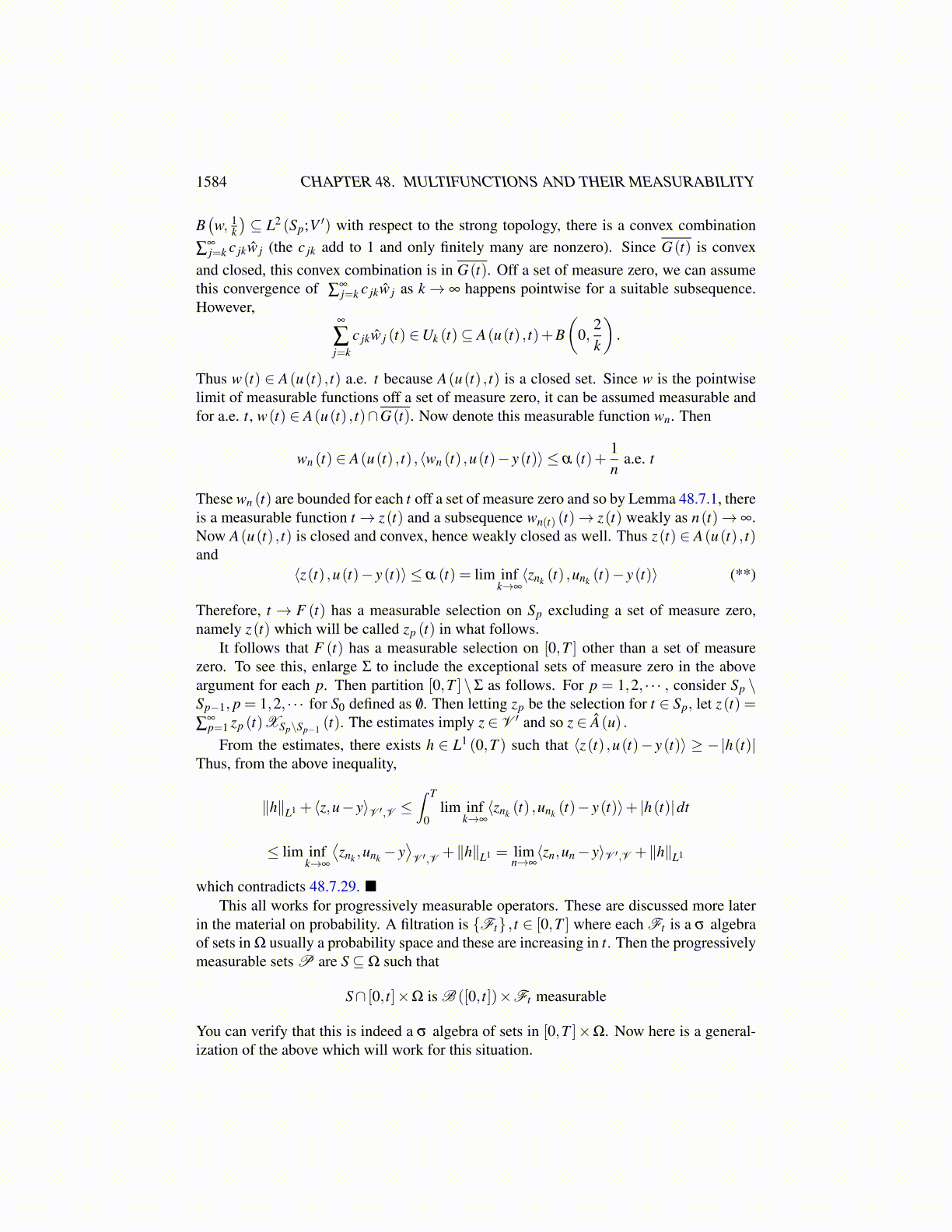
1584 CHAPTER 48. MULTIFUNCTIONS AND THEIR MEASURABILITY
We will obtain a contradiction to this. In what follows we continue to use the subsequencejust described which satisfies the above inequality.
The estimate 48.7.26 implies,
0≤ ⟨zn (t) ,un (t)−u(t)⟩− ≤ c(t)+C ||u(t)||pV , (48.7.30)
where c is a function in L1 (0,T ). Thanks to (48.7.25),
lim infn→∞⟨zn (t) ,un (t)−u(t)⟩ ≥ 0,
and, therefore, the following pointwise limit exists,
limn→∞⟨zn (t) ,un (t)−u(t)⟩− = 0,
and so we may apply the dominated convergence theorem using (48.7.30) and conclude
limn→∞
∫ T
0⟨zn (t) ,un (t)−u(t)⟩−dt =
∫ T
0limn→∞⟨zn (t) ,un (t)−u(t)⟩−dt = 0
Now, it follows from (48.7.27) and the above equation, that
limn→∞
∫ T
0⟨zn (t) ,un (t)−u(t)⟩+dt
= limn→∞
∫ T
0⟨zn (t) ,un (t)−u(t)⟩+ ⟨zn (t) ,un (t)−u(t)⟩−dt
= limn→∞⟨zn,un−u⟩V ′,V = 0.
Therefore, both∫ T
0 ⟨zn (t) ,un (t)−u(t)⟩+dt and∫ T
0 ⟨zn (t) ,un (t)−u(t)⟩−dt converge to 0,thus,
limn→∞
∫ T
0|⟨zn (t) ,un (t)−u(t)⟩|dt = 0 (48.7.31)
limn→∞⟨zn,un−u⟩V ′,V = 0
From the above, it follows that there exists a further subsequence {nk} not depending on tsuch that ∣∣⟨znk (t) ,unk (t)−u(t)⟩
∣∣→ 0 a.e. t. (48.7.32)
Therefore, by the pseudomonotone limit condition for A there exists wt ∈ A(u(t) , t)such that for a.e. t,
α (t) ≡ lim infk→∞⟨znk (t) ,unk (t)− y(t)⟩
= lim infk→∞⟨znk (t) ,u(t)− y(t)⟩ ≥ ⟨wt ,u(t)− y(t)⟩.
Then on the exceptional set, let α (t)≡ ∞, and consider the set
F (t)≡ {w ∈ A(u(t) , t) : ⟨w,u(t)− y(t)⟩ ≤ α (t)} ,